European Euonymus, also known as the European Spindle Tree or simply Spindle Bush (Euonymus europaeus), is a versatile, deciduous shrub belonging to the Celastraceae family. Native to Europe, the Caucasus, and parts of western Asia, this perennial plant thrives in USDA hardiness zones 3 to 8.
Characterized by its upright growth habit, the spindle tree gradually develops a rounded shape as it matures. In spring, small greenish-yellow flowers appear, adding subtle charm. By autumn, the plant showcases its ornamental appeal with striking pinkish-red fruits that contain vivid orange-red seeds. The foliage shifts from dull green to a warm yellow in fall, eventually deepening into a stunning reddish-purple hue.
With its vibrant seasonal changes and adaptability, the European Spindle Tree can be an eye-catching addition to home gardens or landscapes. The following guide provides essential information on growing and caring for this remarkable plant.
| Common name | European Euonymus, European Spindle Tree, Spindle Tree |
| Botanical name | Euonymus europaeus |
| Family | Celastraceae |
| Species | europaeus |
| Origin | Europe to Caucasus and western Asia. |
| Life cycle | Perennial |
| Plant type | Houseplant |
| Hardiness zone | 3, 4, 5, 6, 7, 8 |
| Sunlight | Full Sun |
| Maintenance | High |
| Soil condition | Clay |
| Soil ph | Alkaline |
| Drainage | Well-Drained |
| Growth rate | Fast |
| Harvest time | Fall |
| Flowering period | Spring |
| Height | 12 ft. – 20 ft. |
| Flower color | Gold, Yellow |
| Leaf color | Gold, Yellow |
| Fruit color | Pink |
| Stem color | Green |
| Fruit type | Berry |
| Fruit benefit | Showy |
| Leaf benefit | Showy |
| Toxicity | Poisonous |
I. Appearance and Characteristics
Euonymus europaeus, the spindle, European spindle, or common spindle, is a species of flowering plant in the family Celastraceae, native to much of Europe, where it inhabits the edges of forest, hedges and gentle slopes, tending to thrive on nutrient-rich, chalky and salt-poor soils. It is a deciduous shrub or small tree.
Euonymus europaeus grows to 3–6 m (10–20 ft) tall, rarely 10 m (33 ft), with a stem up to 20 cm (8 in) in diameter. The leaves are opposite, lanceolate to elliptical, 3–8 cm long and 1–3 cm broad, with a finely serrated edge. Leaves are dark green in summer. Autumn colour ranges from yellow-green to reddish-purple, depending on environmental conditions.
The hermaphrodite flowers are produced in late spring and are insect-pollinated; they are rather inconspicuous, small, yellowish green and grow in cymes of 3–8 together. The capsular fruit ripens in autumn, and is red to purple or pink in colour and approximately 1–1.5 cm wide. When ripe, the four lobes split open to reveal the orange seeds.
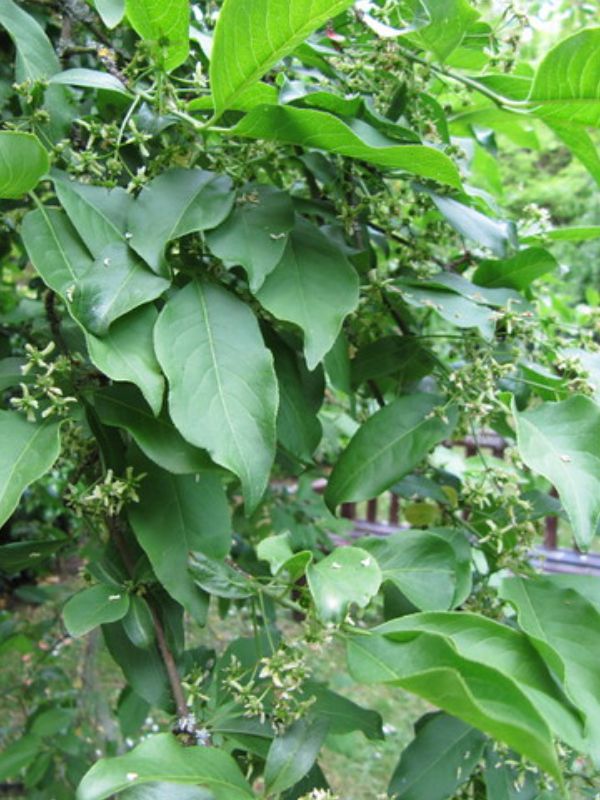
E. europaeus occurs as an understory shrub or small tree primarily in old hedgerows, open woodland clearings and margins, and scrubland on base-rich or calcareous soils, although it is also shade-tolerant. It rarely invades open habitats such as grasslands except in the presence of abundant hedges In Ireland, it can also be found growing on rocky limestone outcrops, rocky lake shores and limestone pavements.
II. How to Grow and Care
Sunlight
European spindletree thrives under full sun conditions, where it receives unfiltered, direct light for most of the day. This light intensity promotes vigorous growth and optimal health, allowing for lush foliage and robust flowering. Despite its preference for full sun, european spindletree displays an adaptable nature with a tolerance for partial sun. In these less intense light environments, european spindletree may experience a reduction in growth rate and possible changes in leaf coloration or density, yet remains healthy. Outdoors, european spindletree should be planted in locations where it can bask in ample sunlight, although it can still perform well in areas with dappled shade, adapting its foliage to maximize light absorption.
Temperature
Dry cold winds are not favored for the growth of european spindletree, as it prefers warmer temperatures for its optimum growth potential. The annual day temperature should range between 12 to 20 ℃ whereas night temperatures range is between 4 to 12 ℃. It is fairly tolerant of freezing temperatures in the winter and less tolerant of heat. In addition, european spindletree has average water needs. It needs water regularly but overwatering is inappropriate.
Watering
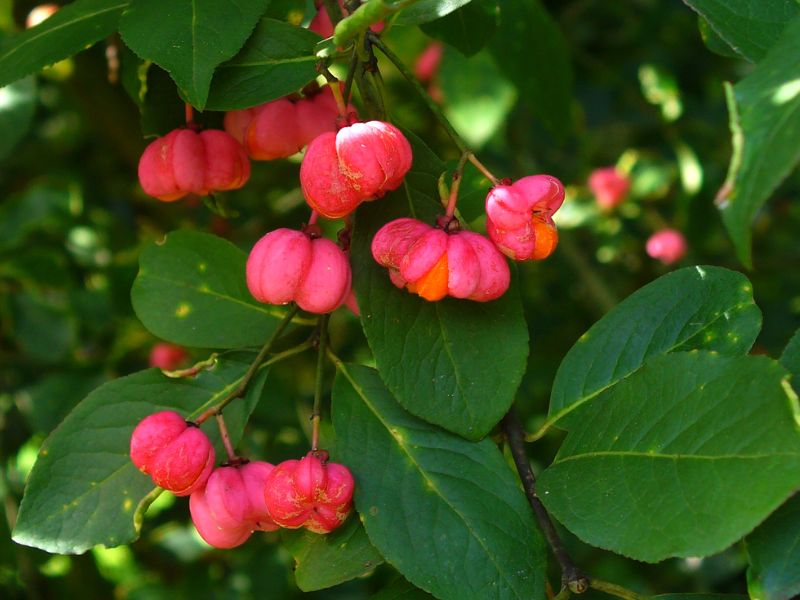
European spindletree thrives in conditions that mimic its native environment, which is characterized by moderate moisture levels. This species has adapted to withstand short periods of dryness but prefers consistent soil moisture for optimal growth. Accordingly, it benefits from watering once every 1-2 weeks, ensuring the soil does not completely dry out between sessions. As european spindletree is more commonly grown outdoors, it’s important to consider how natural rainfall contributes to its watering schedule, especially during the growing season when water uptake and transpiration rates are higher.
Soil
European spindletree is adaptable from poor to rich soil with medium water holding capacity that is well-drained and aerated. Damp calcareous soils equally favor its growth including compact and dry soils. It is also adaptable to a variety of soil pH where it can successfully grow in acidic to high alkali soils of varying pH ranging from 5.6-7.2. European spindletree can also grow in swamplands, bottomland hardwood forests, thickets and slopes near or on the stream banks. When it becomes fully established, it is exceptionally drought tolerant.
Fertilizing
For european spindletree, utilize balanced nutrition fertilizers in spring to support growth, and high nitrogen options early in the growing season to bolster foliage. Fertilizing should occur bi-annually, initially in early spring and again mid-summer, adhering to product-specific dosage guidelines. Benefits include enhanced growth, improved vigor, and vibrant fruiting. Avoid over-fertilization to prevent root burn.
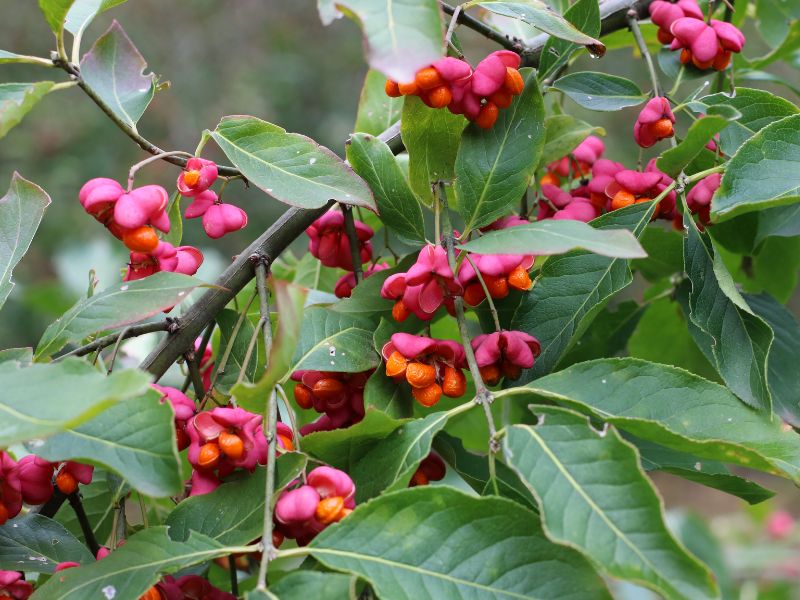
Seasonal adjustments are crucial, as active growth phases require more nutrients. Utilize slow-release formulas for prolonged nourishment, and water european spindletree thoroughly post-application to aid absorption and reduce nutrient runoff.
Pruning
Pruning is often practiced on the european spindletree grown for hedge formation in the landscapes. Medium to heavy pruning is advised if the purpose is to shape or topiary formation otherwise it goes well unpruned. Winter is the best pruning and trimming time for the european spindletree other than evergreen shrubs.
Transplanting
The ideal time to transplant european spindletree is during the early spring or from mid-fall to late fall, as it allows the plant to establish a strong root system. Choose a sunny to partially shaded location with well-drained soil, while ensuring good circulation. Happy transplanting!
How to Grow
Propagate spindle bush by taking semi-ripe cuttings from a mature plant in late summer or early fall. Plant the cuttings in a mixture of peat moss and coarse sand. Place the pot in bright, indirect light and water often enough to keep the mixture moist but never saturated.
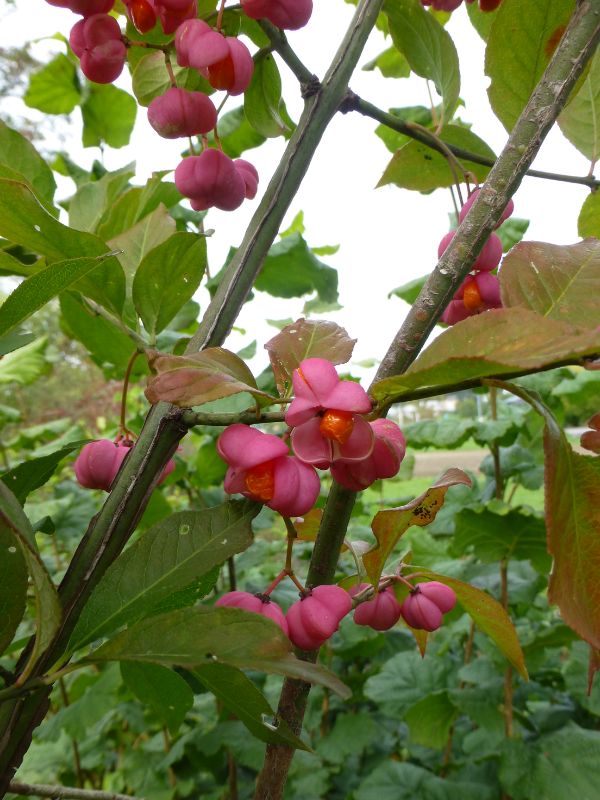
You can also plant spindle bush seeds, although the seeds are notoriously slow to germinate. Gather spindle bush seeds in fall, then store them in a plastic bag filled with moist sand and compost until spring. Plant the seeds and allow them to develop indoors for at least a year before moving them outside. Preferably plant spindle bush in full sunlight. You may also plant the bush in dappled sunlight or partial shade, but too much shade will diminish the brilliant fall color. Nearly any type of well-drained soil is fine. If possible, plant two shrubs in close proximity for more effective cross-pollination.
Repotting
Repot european spindletree every 2-3 years to accommodate its robust growth. Spring is ideal, ensuring minimal stress during its active season. Select a slightly larger pot to support its bushy form; adequate drainage is crucial. Post-repotting, provide european spindletree with consistent watering and partial shade for recovery. These steps contribute to european spindletree’s vibrant berries and foliage.
III. Uses and Benefits
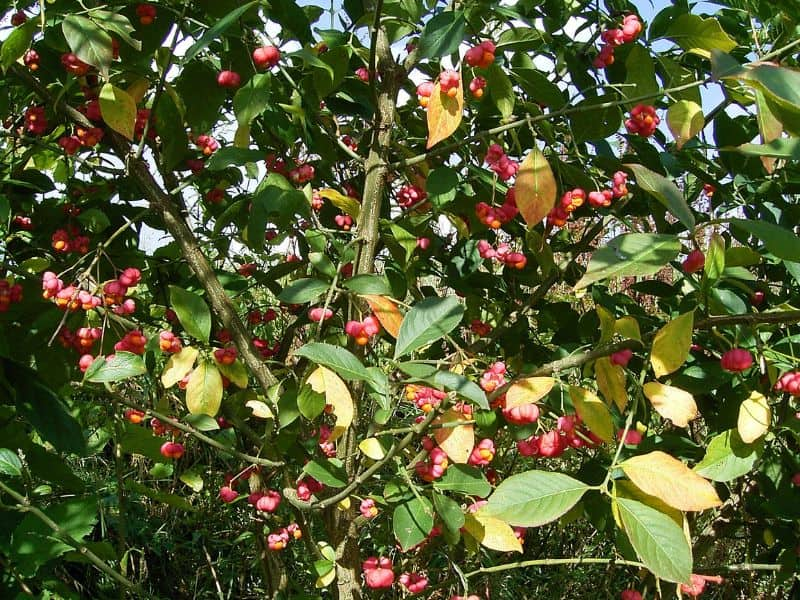
European spindletree (Euonymus europaeus) is a common shrub or small tree that is best used in gardens as a hedging plant because of its dense growth. The bright colors of Rhododendron luteum and Aquilega ‘swan lavender’ make a great contrast to this shrub’s showy white flowers. This is a good fit for cottage and informal gardens.
Find Where to Buy the Best European Spindle Tree (Euonymus europaeus)





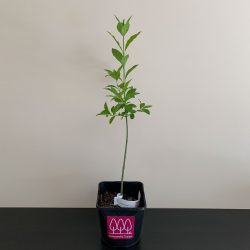



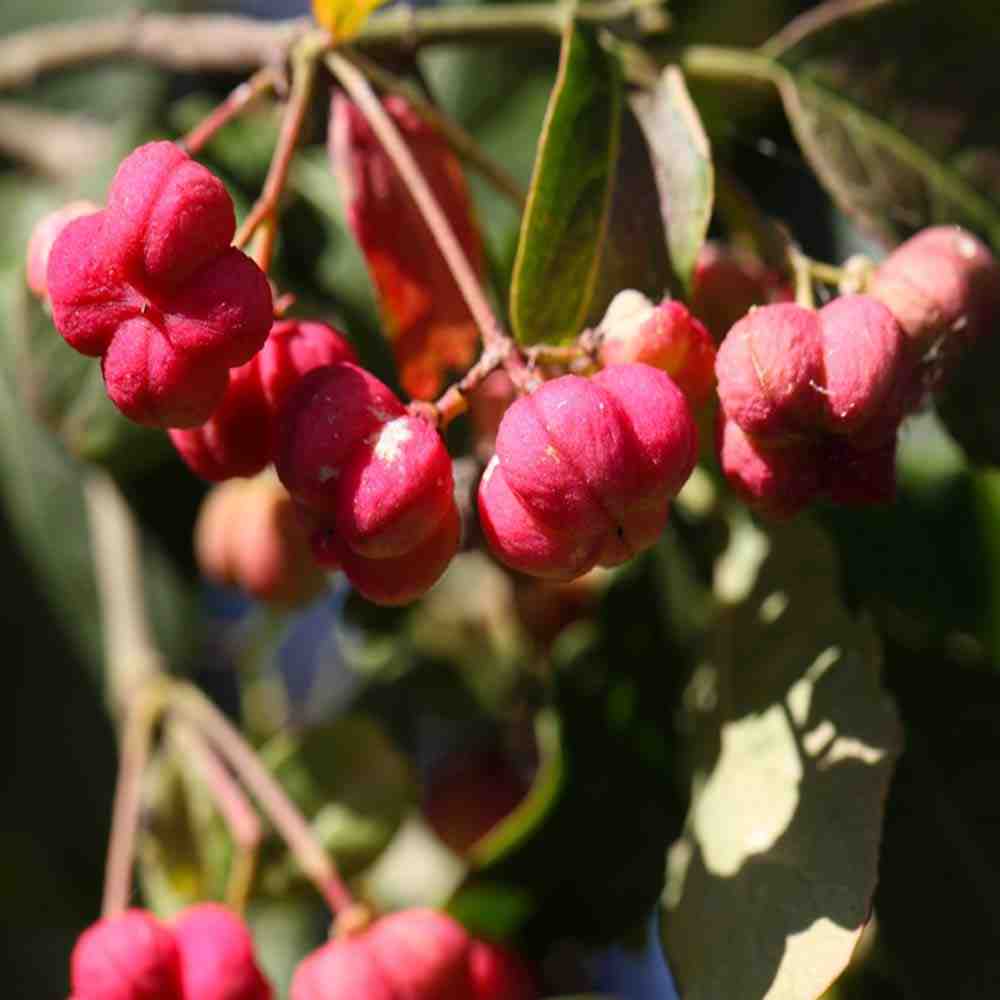








Leave a Reply